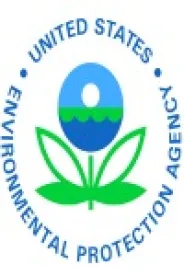In a major reversal for the United States Environmental Protection Agency (USEPA), the Supreme Court on June 23, 2014, limited USEPA’s authority to regulate greenhouse gases (GHGs), holding that USEPA did not have the authority to change a statutory applicability term of the Clean Air Act (Act). Utility Air Regulatory Group v. Environmental Protection Agency, et al. (UARG), No. 12-1146, slip op. (June 23, 2014). “Were we to recognize the authority claimed by EPA in the Tailoring Rule, we would deal a severe blow to the Constitution’s separation of powers.” Id. at 23. As a result, the Court concluded that USEPA cannot require a Title V or Prevention of Significant Deterioration (PSD) permit solely on the basis of a source’s GHG emissions.
At issue in the case were several actions USEPA undertook to regulate GHGs in response to the Supreme Court’s 2008 decision in Massachusetts v. EPA, 549 U.S. 497 (2007) (Massachusetts). USEPA’s actions were upheld by the D.C. Circuit in June 2013. Coalition for Responsible Regulation v. EPA, 684 F.3d 102 (D.C. Cir. 2012) (Coalition). The Supreme Court agreed to hear one question presented from the consolidated appeals of Coalition: “Whether EPA permissibly determined that its regulation of greenhouse gas emissions from new motor vehicles triggered permitting requirements under the Act for stationary sources that emit greenhouse gases.” UARG, at 9. (internal citations omitted).
Among the actions upheld in Coalition was USEPA’s 2010 “Tailoring Rule,” which phased in regulation of GHGs over several years. Under the Tailoring Rule, USEPA, in effect, changed the statutory “major emitting source” threshold that triggered PSD and Title V requirements from 100/250 ton per year (tpy) to 100,000 tpy for GHGs (measured as carbon dioxide equivalent, or CO2e) in order to avoid what USEPA characterized as an “absurd” result—that is, without the tailoring rule, regulation of GHGs under Title V and PSD would impose an unreasonable burden on sources, permitting agencies, and the public by requiring tens of thousands of additional sources to obtain such permits. The Tailoring Rule further provided that a “modification” at a major stationary source would need to increase GHG emissions by at least 75,000 tpy to trigger PSD permitting requirements.
The Supreme Court, in a 5-4 majority opinion authored by Justice Scalia, determined that two distinct issues existed in the appeal: whether USEPA permissibly determined (1) that a source could become subject to PSD or Title V requirements solely due to its potential to emit GHGs, and (2) that a source already required to obtain a PSD permit as a result of its emissions of other pollutants may become subject to the best available control technology (BACT) requirement for GHGs.
First, the Court held that USEPA impermissibly determined that a source could be subject to PSD or Title V regulations solely on the basis of its potential to emit GHGs. At issue was whether USEPA was compelled to—or even allowed to—interpret the term “any air pollutant” under the PSD and Title V provision of the Act to include GHGs since GHGs were regulated as “any air pollutant” under Title II of the Act (applying to mobile sources). The Court explained that Massachusetts did not compel USEPA to regulate GHGs under other sections of the Act “where their inclusion would be inconsistent with the statutory scheme.” UARG at 14. The Court noted that USEPA itself recognized that it was unreasonable to apply PSD and Title V to sources on this basis, and so USEPA must look at the context of the Act to find a reasonable meaning. The Court recited numerous instances where, in the past, USEPA has itself interpreted the term “any air pollutant” differently depending on the context of the specific provision of the Act. In one of the more memorable quotes, the Court stated:
It is plain as day that the Act does not envision an elaborate, burdensome permitting process for major emitters of steam, oxygen, or other harmless airborne substances. It takes some cheek for EPA to insist that it cannot possibly give “air pollutant” a reasonable, context-appropriate meaning in the PSD and Title V contexts when it has been doing precisely that for decades.
UARG, at 12.
The Court then went beyond the initial question presented and looked at the validity of the Tailoring Rule. The Court said that Congress had expressed no ambiguity in the “precise, numerical thresholds at which the Act requires PSD and Title V permitting,” and that “[w]hen EPA replaced those numbers with others of its own choosing, it went well beyond the ‘bounds of its statutory authority.’” UARG, at 21 (quoting Arlington v. FCC, 569 U. S., at ___ (slip op., at 5) (emphasis deleted).
The Court underscored:
We are not willing to stand on the dock and wave goodbye as EPA embarks on this multiyear voyage of discovery [referring to the three step phase-in set forth in the Tailoring Rule]. We reaffirm the core administrative-law principle that an agency may not rewrite clear statutory terms to suit its own sense of how the statute should operate.
UARG, at 23.
Second, the Court appeared to hold that USEPA may require a source that is otherwise subject to PSD permitting based upon its emissions of other pollutants (so-called “anyway” sources under Step 1 of the Tailoring Rule) to comply with BACT for GHGs, when triggered. Specifically, the Court stated, “EPA may require an ‘anyway’ source to comply with greenhouse-gas BACT only if the source emits more than a de minimis amount of greenhouse gases.” UARG, at 28. The Court observed that “the Tailoring Rule applies BACT only if a source emits greenhouse gases in excess of 75,000 tons per year CO2e, but the Rule makes clear that” EPA did not set 75,000 tpy as a de minimis level. Id. The Court concluded that “EPA may establish an appropriate de minimis threshold below which BACT is not required for a source’s greenhouse-gas emissions.” Id. at 28-29. The Court left open whether 75,000 tpy would constitute an appropriate de minimis level.
The rationale for the Court’s holding centers on the difference in language between the BACT trigger in the Act (which applies to “each pollutant subject to regulation under this chapter”) and the PSD and Title V permitting triggers (which apply to “any air pollutant”). The Court held that the more specific language in the BACT provision justified the different interpretation. Moreover, setting aside the textual difference, the Court noted the significance of the difference in context of the BACT provision as compared with the general PSD and Title V triggers. The Court observed that, in the context of the BACT provision:
We are not talking about extending EPA jurisdiction over millions of previously unregulated entities, but about moderately increasing the demands EPA (or a state permitting authority) can make of entities already subject to its regulation. And it is not yet clear that EPA’s demands will be of a significantly different character from those traditionally associated with PSD review. In short, the record before us does not establish that the BACT provision as written is incapable of being sensibly applied to greenhouse gases.
UARG, at 28.
In sum, the decision generally concluded that USEPA could not subject any source to PSD and Title V permitting based upon their GHG emissions alone. The decision also held that so-called “anyway sources” under the Tailoring Rule can be required to comply with BACT for GHGs, when triggered. The Court held that USEPA “may establish an appropriate de minimisthreshold below which BACT is not required” for GHGs, and noted that USEPA would need to properly justify that de minimis threshold, whether at 75,000 tpy or some other level. UARG, at 29.
The Court’s opinion can be found at http://www.supremecourt.gov/opinions/13pdf/12-1146_4g18.pdf






 />i
/>i
